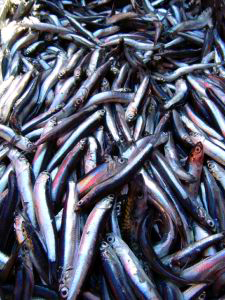The Sardines Are Here!
The sardines arrived in Pennington on the South Coast on Tuesday, which means they will more than likely be hitting Durban this weekend. The sardines normally reach Durbs by the end of June – just in time for the winter school holidays. But you’re fashionably late this year, guys! Well… rather late than never, hey?
Sharks Board deputy chief executive officer Mike Anderson-Reade said that “things are looking up and with a bit of luck, we just might see sardines off Durban by the weekend.” Although the shoal this year is not as big as those in previous years, it is still as exciting as ever to see the sea bubbling with activity and people frantically filling buckets, towels and anything they can get their hands on really, with sardines.
The Sardine Run usually occurs between May and July when millions of sardines – or more specifically the Southern African pilchard Sardinops sagax – spawn in the cool waters of the Agulhas Bank and move northward along the east coast of South Africa. Their sheer numbers create a feeding frenzy along the coastline. The run, containing millions of individual sardines, occurs when a current of cold water heads north from the Agulhas Bank up to Mozambique – where it then leaves the coast line and goes further East into the Indian Ocean.
In terms of biomass, researchers estimate the sardine run could rival East Africa’s great wildebeest migration. However, little is known of the phenomenon. It is believed that the water temperature has to drop below 21°C in order for the migration to take place. In 2003, the sardines failed to run for the third time in 23 years. While 2005 saw a good run, 2006 marked another non-run.
The shoals are often more than 7 km long, 1.5 km wide and 30 meters deep, and are clearly visible from spotter planes or from the surface.
Sardines group together when they are threatened. This instinctual behaviour is a defence mechanism as individuals are more likely to be eaten than large groups. The bait balls can be 10-20 metres in diameter and extend to a depth of 10 metres, but they are short lived and seldom last longer than 10 minutes. Dolphins are largely responsible for rounding up the sardines into bait balls. Once the sardines are rounded up, sharks, game fish and birds take advantage of the opportunity.
So people, get your nets (or buckets) ready and head for the wonderful spectacle that is the world renowned Sardine Run – in Durban this weekend!
Reference: Independent Online, Wikipedia





Such an interesting article, thanks Katrine! I have never actually seen these guys myself though! (besides in a tin)
They have HUGE eyes!
Must be an incredible experience to see this, did they arrive on time?
They did arrive in Durban on the weekend, but unfortunately I didn’t get to see them this year as I was moving house and had a wedding to attend. I have seen them before though, but for those who haven’t: the National Geographic documentary that was made a couple of years back, called The Greatest Shoal on Earth, is really worth watching!